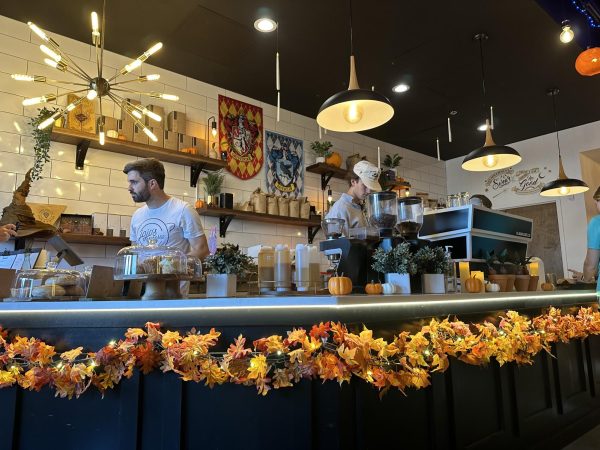Run! Splat! Hide!
A review of “Splatoon 3”
Photo: Abbi Whitehead
Inklings and Octolings are in the square and a hidden mission through the grate.
The “Splatoon” series is one of my favorite game franchises. Its music, visuals, multiplayer gameplay and character customization are unique, and the game is known for having personality.
With “Splatoon 3” having been released earlier this year on September 9th, it’s only fair I do a review of it. There are currently three games in the series; the first game is on the Wii U, and “Splatoon 2” and “Splatoon 3” are only available on the Nintendo Switch as of now.
The newest installment drives that personality forward into a new light. The main part of the multiplayer aspect of the game involves battling using ink in Turf Wars, during which each player is placed on a team and tasked to cover the most arena ground with your team’s ink, which can be done using a variety of weapons, bombs and specials that require you to charge up by spreading ink. There are a few other game modes you can play, depending on how high your level is.
You can customize your character in all three games, although the third adds much more variety to your options. In “Splatoon 3,” you can be an Octoling (think octopus kid) at the start of the game or you can be an Inkling (squid kid). There are no longer gender choices like in “Splatoon 1” and “Splatoon 2,” simply “style” options and different movement animations. You can choose your hairstyle, eye color, and pants style, and once you start playing turf wars and get some money from it, you can buy new clothes to customize your character with. Your clothes can give you power ups and special boosts when you wear/equip them.
My personal favorite shirt to wear is the Barazushi Anorak paired with shorts and punk whites shoes and specialize in adding ink boosting abilities. There are a several different weapon types, including bows, chargers (snipers), buckets, brushes, splatanas, guns and dualies, each with their own play styles. I mainly use the Octobrush, a giant paint brush and tri-slosher, which is a big bucket that throws paint; however, the charger class is a close third in my choice of weapons.
Each game has “idols” – people who make announcements about current turf war, ranked, and salmon run stages (salmon run starting in “Splatoon 2” onward).
In “Splatoon 3” there are three idols: Shiver, Frye and Big Man (who is a manta ray and the first male idol). Each game has a playable story section called “hero mode,” accessed through a sewer grate in the plaza.
“Splatoon 3” starts out similarly to the other games: the great Zapfish (the source of power for the city) is gone from the Splatlands. You follow a weird man into the sewer who turns out to be Captain Cuttlefish, who used to fight Octarians (the antagonists of the game) in the great turf war. However, the area he leads you to is covered in a weird fuzzy ooze. If you touch it, you turn into a ball of fluff and respawn. You go through a few levels and collect Zapfish, with the Octarians as the main threat, all covered in the ooze. The prologue ends with the first boss fight against DJ octavio.
Overall, “Splatoon 3” is a super fun game and I highly recommend playing it. The graphics and layout have taken a step up from the past two games, and the ink has a lot more texture than the past two games, making it look actually heavy along with controller vibrations recreating the feeling of recoil.
For more depth about the differences and new additions, click here.







